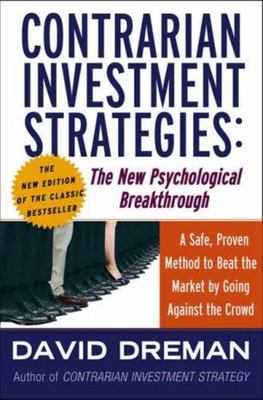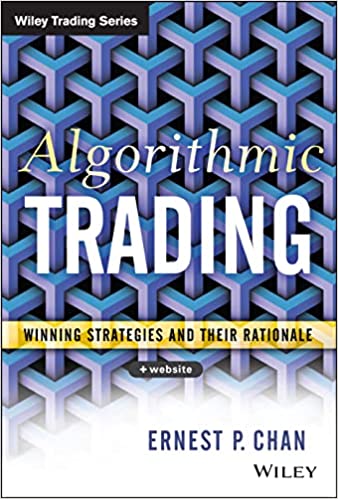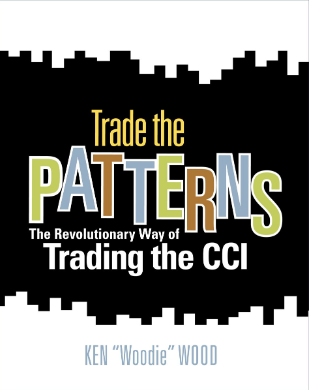You are missing trading opportunities:
- Free trading apps
- Over 8,000 signals for copying
- Economic news for exploring financial markets
Registration
Log in
You agree to website policy and terms of use
If you do not have an account, please register
The Art Of Conrarian Trading : How to Profit from Crowd Behavior in the Financial Markets By Carl Futia
In 16 chapters filled with facts and many historical examples Futia explains the principles and practice of contrarian trading. Discover the Edge which separates winning speculators from the losers. Find out how to apply the No Free Lunch principle to identify profitable trading methods. Learn about the wisdom and the follies of investment crowds – and how crowds are formed by information cascades that drive stock prices too high or too low relative to fair value. Discover the power of your Media Diary - and how to use it to spot these information cascades, measure the strength of the crowd’s beliefs, and decide when the crowd’s view is about to be proven wrong.
You will watch Futia apply these principles of contrarian trading to navigate safely and profitably through the last 26 tumultuous years of roller coaster swings in the U.S. stock market – a time during which Futia kept his own media diary and developed his Grand Strategy of Contrarian Trading. See how this Grand Strategy worked during the Great Bull Market of 1982-2000. Watch the Contrarian Rebalancing technique in practice during the dot.com crash of 2000-2002. Find out when the Aggressive Contrarian Trader bought and sold during the bull market of 2002-2007. Read about the causes of the Panic of 2008 and ups and downs of contrarian trading during that dangerous time.
Futia shows you how the market turning points during the 1982-2008 period were foreshadowed by magazine covers and newspaper headlines that astonishingly and consistently encouraged investors to do the wrong thing at the wrong time. By monitoring crowd beliefs revealed by news media headlines – and with the guidance provided by the many historical examples Futia provides – a trader or investor will be well-equipped to anticipate and profit from market turning points.
Contrarian Investment Strategies: The Psychological Edge By David Dreman

In this major revision of his investment classic, one of the premier investment managers introduces vitally important new findings in psychology that show why most investment strategies are fatally flawed and his contrarian strategies are the best way to beat the market.The need to switch to a new approach for investing has never been more urgent. The Crash of 2007 revealed in dramatic fashion that there are glaring flaws in the theory that underlies all of the prevailing investment strategies—efficient market theory. This theory, and all of the most popular investing strategies, fail to account for major, systematic errors in human judgment that the powerful new research in psychology David Dreman introduces has revealed, such as emotional over-reactions and a host of mental shortcuts in judgment that lead to wild over and under-valuations of stocks, bonds, and commodities and to bubbles and crashes. It also leads to horribly flawed assessments of risk.
Dreman shows exactly how the new psychological findings definitively refute those strategies and reveals how his alternative contrarian strategies do a powerful job of accounting for them. He shows readers how by being aware of these new findings, they can become saavy psychological investors, crash-proofing their portfolios and earning market beating long-term returns. He also introduces a new theory of risk and substantially updates his core contrarian strategies with a number of highly effective methods for facing the most pressing challenges in the coming years, such as greatly increased volatility and the prospect of inflation. This is every investor’s essential guide to optimal investing.
Deep Learning and Scientific Computing with R torch (Chapman & Hall/CRC The R Series)
by Sigrid Keydana
Though still "young" as a project, R torch already has a vibrant community of users and developers. Experience shows that torch users come from a broad range of different backgrounds. This book aims to be useful to (almost) everyone.
Algorithmic Trading: Winning Strategies and Their Rationale

"Algorithmic Trading: Winning Strategies and Their Rationale" by Ernie Chan is an excellent book on algorithmic trading. The author provides a detailed and practical guide to designing and implementing profitable trading strategies using various programming languages. The book covers a wide range of topics related to algorithmic trading, including backtesting, risk management, and portfolio optimization. The author also provides several real-world examples of trading strategies and how to implement them. What sets this book apart is the author's emphasis on understanding the rationale behind trading strategies, rather than just providing code to implement them. This approach makes the book useful for both beginner and experienced traders. Overall, I highly recommend this book to anyone interested in algorithmic trading.YOU can buy it on Amazon
Trade the Patterns: The Revolutionary Way of Trading the CCI
by Ken Woodie Wood

More than 30 years ago Ken Wood, also known as, Woodie, discovered a revolutionary way of trading on the CCI, a little-known moving average index. Woodie noticed that patterns forming on the CCI reveal how the market is moving. The CCI is a leading indicator, and Woodie figured out how it could help him get into a trade ahead of standard trend lines.3 Candlestick Patterns For Market Reversals - Morning Doji Star, Evening Doji Star, Island Reversal Patterns
Forum on trading, automated trading systems and testing trading strategies
Something Interesting to Read February 2014
newdigital, 2014.02.02 08:57
High Profit Candlestick Patterns : Stephen Bigalow
High profit trading patterns, revealed by utilizing time-honored Japanese candlestick signals. A straight-forward approach to understanding and exploiting market opportunities. Practical applications to predict stock price movements consistently and profitably, a winning system in good times or bad! All detailed in: "High Profit Candlestick Patterns: Turning Investor Sentiment into Profits" By Stephen W. Bigalow
Don’t play the market, Beat the Market! Stephen W. Bigalow’s first book "Profitable Candlestick Trading" taught the novice investor how to quickly identify the best trading opportunities. Now his new book, "High Profit Candlestick Patterns" takes his teaching to the next level. Combining the proven results of Japanese Candlestick charting with effective Western technical analysis, produces even higher profit wealth-building stock selection techniques. Learn the key to profitable stock selection with this safer approach to investing and avoid expensive trading mistakes. Quickly learn the simplest, yet most intelligent, approach to stock selection. Candlestick signals visually produce compelling results. Japanese candlestick charting techniques, integrated with statistically proven Western technical analysis, produces an even more powerful investment platform. The ability to recognize trading patterns in their very early stages empowers an investor with high profit trading strategies.
For the technical investor, the combined analysis provides potent trading programs. The fundamental investor gains tremendous insights into the timing of positions. The introduction of cutting-edge computer generated technical analysis, with the world's most proven trading technique, becomes a powerful tool for understanding the movements of the markets. Discover simple techniques that put the probabilities highly in your favor.
Japanese candlestick signals provide an immense amount of information. They graphically depict what is occurring in investor sentiment. This alone provides a huge advantage for the investor. Having the ability to identify reversals in price trends, utilizing statistically proven and utilized signals, allows an investor to develop high profit trading strategies. The psychological elements not only reveal trend reversals, but they provide the insights for understanding why that reversal is occurring. This becomes a very powerful investment tool.
The graphic illustrations in this book are simple common sense revelations. Utilizing candlestick signals in conjunction with Western technical patterns produces two strong investment elements. First, it allows for the recognition of the optimal times for entering a trade. Second, the candlestick signals revealed immediately when the trend pattern is not performing correctly, allowing for quick exits.
You will receive a whole new perspective for profitably investing in the markets. You do not have to learn formulas nor develop investing talents. The combination of candlestick signals with easy-to-identify trading patterns will vastly expand your investment confidence. The self-mastery of profitable investing is greatly simplified with quick visual evaluations.
by Max Kuhn and Julia Silge
Forum on trading, automated trading systems and testing trading strategies
Quantitative trading
MetaQuotes, 2023.05.15 14:03
"Mathematical Modeling and Computation in Finance: With Exercises and Python and MATLAB Computer Codes", by C.W. Oosterlee and L.A. Grzelak, World Scientific Publishing, 2019.
"Mathematical Modeling and Computation in Finance: With Exercises and Python and MATLAB Computer Codes" is an invaluable book that explores the intersection of mathematics, finance, and computer science. Written by experts in the field, it provides a comprehensive guide to understanding and implementing mathematical models in finance using popular programming languages like Python and MATLAB.
The book begins by introducing readers to the fundamental concepts of mathematical modeling in finance, including probability theory, stochastic calculus, and optimization techniques. It emphasizes the practical aspects of modeling and computation, highlighting the importance of numerical methods and simulation in solving real-world financial problems.
One of the standout features of this book is its inclusion of numerous exercises and computer codes in Python and MATLAB. These exercises allow readers to actively engage with the material, reinforce their understanding of the concepts, and develop their programming skills. By working through the exercises and implementing the provided codes, readers can gain hands-on experience in applying mathematical models to finance and enhance their proficiency in using these programming languages for financial analysis.
The book covers a wide range of topics relevant to finance, such as option pricing, portfolio optimization, risk management, and asset allocation. It delves into advanced topics like volatility modeling, interest rate modeling, and credit risk modeling, providing readers with a comprehensive understanding of the mathematical techniques used in financial modeling.
The authors strike a balance between theoretical rigor and practical application throughout the book. They provide clear explanations of the underlying mathematical concepts and algorithms, accompanied by real-world examples and case studies. This approach enables readers to grasp the theoretical foundations while also gaining insights into how these models can be applied to solve practical financial problems.
Furthermore, the book highlights the advantages and limitations of different modeling approaches, equipping readers with the critical thinking skills necessary to make informed decisions when choosing and implementing models in real-world scenarios.
"Mathematical Modeling and Computation in Finance: With Exercises and Python and MATLAB Computer Codes" is an excellent resource for students, researchers, and practitioners in the field of finance who are looking to deepen their understanding of mathematical modeling and computational methods. Its combination of theoretical explanations, practical exercises, and ready-to-use computer codes makes it an essential companion for anyone interested in applying mathematical techniques to solve financial problems.
https://github.com/LechGrzelak/Computational-Finance-Course
Forum on trading, automated trading systems and testing trading strategies
Presenting the book "MQL5 Programming for Traders"
MetaQuotes, 2023.12.15 16:23
We have released the most comprehensive guide to MQL5 programming, authored by experienced algorithmic trader Stanislav Korotky with MetaQuotes' support.
The book is intended for programmers of all levels. Beginners will learn the fundamentals as the book introduces key development tools and basic programming concepts. With this material, you can create, compile, and run your first application in the MetaTrader 5 trading platform. Users with experience in other programming languages can immediately advance to the applied part related to creating trading robots and analytical applications in MQL5.
The book is freely available online, under the "Book" section of the MQL5.community website. It consists of seven parts:
The book provides numerous source code examples. Following the explanation, you can implement your own applications in the built-in editor and instantly view program execution results in the platform. The source codes are available in the public project \MQL5\Shared Projects\MQL5Book and in the Code Base.
Start learning MQL5 right now and discover the world of professional algorithmic trading. The knowledge gained will help you bring your ideas to life. You can also apply them in a commercial environment by developing and selling applications through the Market and taking on programming orders in the Freelance.
New Trading Systems And Methods : Fourth Edition
As markets evolve, so must the strategies used to trade them. No one understands this more than Perry Kaufman—one of today's most respected futures experts. For more than twenty-five years, traders have turned to Kaufman's classic Trading Systems and Methods for complete information about the latest, most successful indicators, programs, algorithms, and systems. Now, in New Trading Systems and Methods, Fourth Edition, Kaufman thoroughly updates his bestselling guide—adding more systems, more methods, and an extensive array of risk analysis techniques—and shows you the best ways to trade today's futures and equities markets. The companion CD-ROM, which contains TradeStation® code and Excel spreadsheets, has been added to help you electronically implement the systems and methods mentioned throughout the book.
New Trading Systems and Methods, Fourth Edition provides you with a complete understanding of the tools and techniques needed to develop or choose a trading program that is right for you. It begins with a discussion of basic concepts, including definitions, how much data to use, how to create an index, some statistics and probability, and other tools that will be used throughout the book, then moves on to techniques that are most important to trading—identifying the trend and momentum. Other chapters are organized by common grouping so that you can compare the different ways that similar problems have been solved. The systematic approach to charting has been significantly expanded in this edition, showing how various patterns can be compared to other systematic methods, or how techniques such as identifying support and resistance, or channels, can be computerized. Examples include a wide range of futures and stocks.
New Trading Systems and Methods, Fourth Edition doesn't attempt to prove that one system is better than another, because it's impossible to know what will happen in the future or how you will cleverly apply these techniques. Instead, it tries to evaluate the conditions under which certain methods are likely to do better and the situations that will be harmful to specific approaches. By grouping similar systems and techniques together, you'll be able to personally compare the differences and study the results. Seeing how analysts have modified existing ideas can help you decide how to proceed and give you an understanding of why you might choose one path over another. Since no trader can be successful without controlling risk, this edition also includes expanded coverage of portfolio allocation, which will allow you to efficiently balance trading exposure.
As the competition for trading profits gets keener, you need to look for more innovative—and sometimes more extensive—solutions. You need strategies that are different from those of other traders. You need the tools, skills, and awareness that only New Trading Systems and Methods, Fourth Edition can provide.